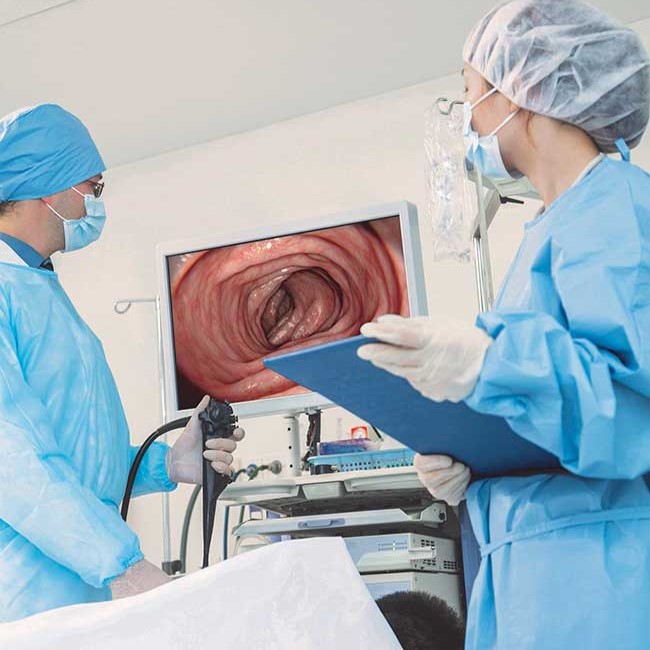Who and when invented the endoscope for seeing the stomach and intestines?
The first endoscope produced was an endoscope named Lichtleiter (light-guided instrument) developed by Philipp Bozzini, who lived in Vienna, Austria between 1773-1809, and introduced in 1805.

Using the reflection of candlelight on a series of lenses, Bozzini was able to see the urinary tract, rectum, and throat passages. In addition to the skepticism of the medical world, Bozzini's early death halted the development of the endoscope for a while.
Philipp Bozzini (May 25, 1773 – April 4, 1809) was born in Mainz, Germany. On June 12, 1797 he was awarded the degree of doctor of medicine. From 1804 onwards, Bozzini devoted himself virtually completely to develop his instrument, Lichtleiter or "Light Conductor", a primitive endoscope to allow for inspecting the ear, urethra, rectum, female bladder, cervix, mouth, nasal cavity, or wounds.
In 1853, Antoine Jean Desormaux, a French surgeon, made a number of modifications to the Lichtleiter endoscope. Using a series of mirrors and lenses, Desormaux reflected the light he obtained by burning alcohol and turpentine (sometimes it is said to burn some patients during this process) on this assembly. Desormaux was also the first to use the term endoscope.
Antonin Jean Desormeaux (25 December 1815 – October 1894) was a 19th-century French physician and inventor who has been called the "father of endoscopy", because he made significant improvements to the early endoscope and was the first to successfully use it to operate on a living patient (his device would be called a cystoscope today). He presented his device to the French Academy of Sciences in Paris on July 20, 1853.
German Dr. Adolph Kussmaul was the first person to look at the stomach of a living person using an endoscope in 1868. Kussmaul performed this procedure on a person swallowing a sword with an endoscope 47 cm long and 13 mm in diameter. Dr. Rudolph Schindler invented a partially flexible endoscope in 1932. After the use of fiber optics on the endoscope in the 1960s, the endoscopes used today have become much more flexible and much smaller in diameter.
But let's not forget: Dr. William Beaumont looked into the stomach of a living creature long before without an endoscope. On June 6, 1822, a French-Canadian traveler, Alexis St. Martin had been shot in the upper left abdomen. The wound opened after being shot was the width of a human fist and would not heal. Through the fistula (an abnormal channel formed between the skin surface and the body cavity), Beaumont, St. He observed Martin's stomach. In this way, he discovered the functions of the stomach more accurately.
